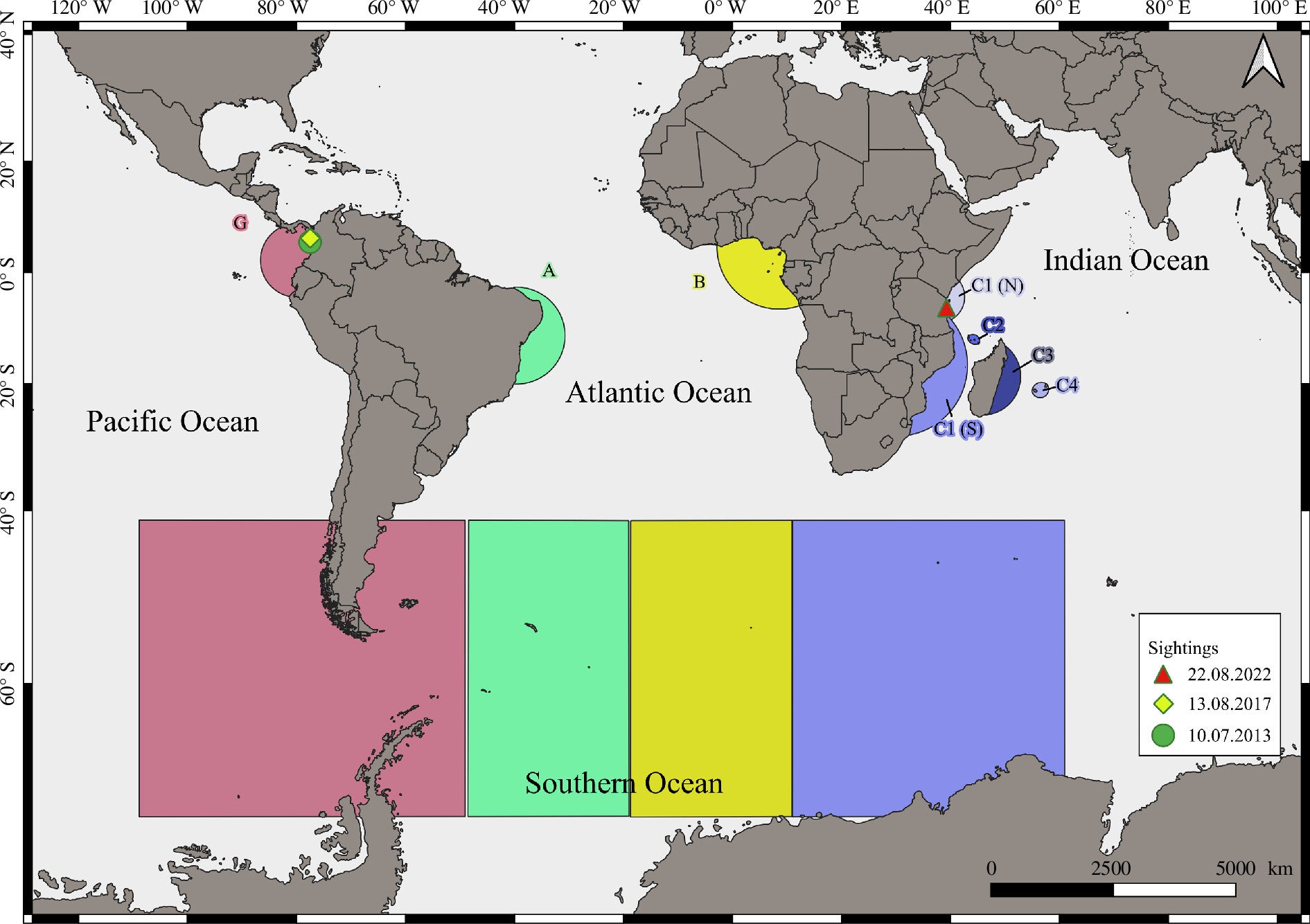Whale stuns scientists with record journey spanning three oceans to mate
Such long journeys may be an evolving adaptation in response to climatic and environmental changes, researchers say
Your support helps us to tell the story
From reproductive rights to climate change to Big Tech, The Independent is on the ground when the story is developing. Whether it's investigating the financials of Elon Musk's pro-Trump PAC or producing our latest documentary, 'The A Word', which shines a light on the American women fighting for reproductive rights, we know how important it is to parse out the facts from the messaging.
At such a critical moment in US history, we need reporters on the ground. Your donation allows us to keep sending journalists to speak to both sides of the story.
The Independent is trusted by Americans across the entire political spectrum. And unlike many other quality news outlets, we choose not to lock Americans out of our reporting and analysis with paywalls. We believe quality journalism should be available to everyone, paid for by those who can afford it.
Your support makes all the difference.A humpback whale has been found travelling a record-breaking distance spanning three oceans to mate, raising an alarm about global challenges affecting the migratory behaviour of the species.
Whales undertake one of the longest migrations to mate compared to all other mammals as the breeding zones of some species span several longitudes.
Though some whale migration routes are known to exceed 8,000km between feeding and breeding grounds, such long-distance movement between longitudes is “atypical”, scientists say.
In a new study published in the journal Royal Society Open Science, researchers tracked the longest-known distance of around 13,000km travelled by a humpback whale between two breeding locations – crossing nearly a third of the world.

Researchers first spotted the whale in 2013 in the East Pacific near Colombia and photographed it again in 2022 in the Southwest Indian Ocean off the coast of Africa near Zanzibar.
This “extraordinary distance” is the longest recorded between sightings in different breeding areas for the species, scientists say.
The whale’s journey may be an evolving adaptation in response to climatic and environmental changes, shifting food sources and mating strategies, researchers say.
The new study underscores the importance of consolidating global datasets on such wide-ranging marine mammals to study how large-scale environmental changes are affecting their populations.
Recent evidence indicates that whales are deviating from their known migratory destinations and longitudinal movement patterns across oceans.
A previous study recorded six whales travelling across breeding grounds in the Abrolhos Bank near Brazil and Cape Town in South Africa between 2002 and 2021.
Photo ID and genetic studies are advancing the understanding of such movement patterns.
In the latest study, scientists conducted dedicated surveys aboard research vessels throughout the breeding season between July and September in Zanzibar and from July to October in Colombia, collecting data on location, acoustic behaviour, group type and size, and spatial distribution of humpback whales.

One adult humpback whale was first photographed in 2013 off the Gulf of Tribugá in the Colombian Pacific and spotted five years later in Bahía Solano, about 78km away. It was again photographed in August 2022 off Fumba in the Zanzibar Channel, southwest Indian Ocean.
“This represents the longest recorded great-circle distance between sightings on two breeding grounds of a photo-identified adult male humpback whale, which is the first record of a humpback whale alternating breeding grounds between the Pacific and Indian Oceans,” researchers write.
The whale’s route of migration, however, remains unknown.
The latest study provides further proof of long-distance migration by humpback whales. Researchers say that understanding how frequently these area shifts occur can help assess their population-level effects.
Join our commenting forum
Join thought-provoking conversations, follow other Independent readers and see their replies
Comments